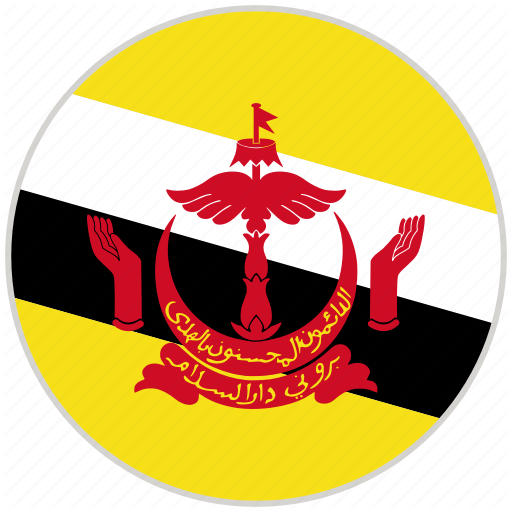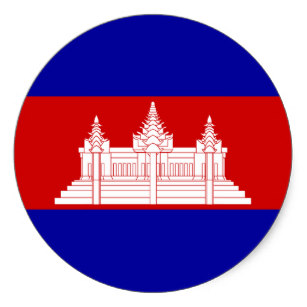1. The 3rd Annual Conference of the Network of East Asian Think-Tanks (NEAT) was held in Tokyo,Japan on 22,23 August 2005. The meeting was organized by the Japan Forum on International Relations, Inc. The meeting was attended by participants from the ASEAN+3 countries with the following institutions as the Country Coordinators: Brunei Darussalam Institute of Policy and Strategic Studies, Ministry of Foreign Affairs, Brunei; General Department of ASEAN, Ministry of Foreign Affairs and International Cooperation, Cambodia; Center for East Asian Studies, China Foreign Affairs University, China; Center for East Asian Cooperation Studies, Indonesia; The Japan Forum on International Relations, Inc., Japan; Korean Institute of Southeast Asian Studies, Korea; Institute of Foreign Affairs, Ministry of Foreign Affairs, Laos; Institute of Strategic and International Studies, Malaysia; Myanmar Institute of Strategic and International Studies, Myanmar; Philippine Institute for Development Studies, The Philippines; East Asian Institute, National University of Singapore, Singapore; Institute of East Asian Studies, Thammasat University, Thailand; and Institute for International Relations, Ministry of Foreign Affairs, Vietnam. ASEAN Secretariat participated as a resource person.
2. The main theme of the 3rd Annual Conference was towards an East Asian Community?and was discussed in five sessions. At the opening session, Professor Ito Kenichi, President & CEO of the Japan Forum on International Relations, the organizer of the 3rd NEAT Conference, delivered the opening remarks. The remarks were also made by the organizers of the 1st and 2nd NEAT Conferences. Mr. Tanaka Hitoshi, former Deputy Minister for Foreign Affairs of Japan delivered the Opening Address.
3. The following three sessions were dedicated to the deliberations of six reports presented to the 3rd Annual Conference by the six Working Groups, which were set up at the NEAT Country Coordinators?meeting on 5 December 2004 in Kuala Lumpur. They were: the Working Group on East Asian Financial Cooperation? the Working Group on promoting Economic Integration in Asia through Resolving New Global Imbalances? the Working Group on Energy Security Cooperation in East Asia? the Working Group on East Asian Investment Cooperation? the Working Group on Concepts, Ideas and Empowering Guidelines for East Asia? and the Working Group on Overall Architecture of Community Building in East Asia.?At those sessions, the presentations were made by the directors of the respective Working Groups, followed by stimulating discussions.
4. At the Closing Session, chaired by Professor Ito Kenichi, President & CEO of the Japan Forum on International Relations, the reports of the preceding sessions were made by the chairs. Then, the 3rd Annual Conference adopted the Policy Recommendations Towards an East Asian Community? Consisting of four sections?. Guiding Principles of Community Building in East Asia?. Architecture ofCommunity Building in East Asia??. Functional Cooperation,?and ?. Promoting Regional Identity in East Asia,?which were to be submitted to the ASEAN+3 Summit expected to be held in Kuala Lumpurin December 2005.
5. The 3rd Annual Conference agreed that Malaysia Country Coordinator will be the host for the 4th Annual Conference of NEAT.
6. The gist of the Policy Recommendations adopted by the 3rd Annual Conference is as follows:
1. Guiding Principles of Community Building in East Asia
a. The goal of community building in East Asia should be the promotion of the welfare and well-being of the people, and the realization of the East Asian vision of cooperative Peace, Prosperity and Progress.
b. Community building should be based on the foundation of universally recognized values. These include among others, good governance, the rule of law, democracy, human rights, international law and norms.
c.East Asia should promote openness, transparency, inclusiveness and comprehensiveness.
2. Architecture of Community Building in East Asia
a. ASEAN has played a key role in promoting regional cooperation in East Asia, and Bali Concord II will continue to propel region-wide efforts for community building.
b. An East Asian Community must be based on the equal partnership, and must be managed democratically based on consensual and non-hegemonic practices.
c. As the functional cooperation is conducted in the areas of a wide-range of issues such as Free Trade Agreements (FTAs)/ Economic Partnership Arrangements (EPAs), finance, environment, health, food security, transnational issues, etc., regional cooperation should be for the moment centered on the promotion of functional cooperation.
d. The ASEAN+3 Summit and all the other ASEAN+3 mechanisms should continue to play major roles in East Asian Community building. The East Asian Summit (EAS) should be a forum for discussing strategic broad issues of interests of East Asia.
e. Closer Northeast Asian cooperation among Japan, China and ROK is an essential foundation of an East Asian Community.
f. As institution building is essential for promotion of community building, the ASEAN+3 Unit in the ASEAN secretariat should be strengthened.
3. Functional Cooperation
a. Financial and Investment Fields.
1. The joint efforts and achievement of ASEAN+3 countries, such as the Chiang Mai Initiative (CMI) and the Asian Bond Markets Initiative (ABMI), should be acknowledged to strengthen financial cooperation in East Asia, having learned from the Asian financial crisis in 1997-1998.
2. For further development of the Asian Bond Market, 3 measures should be taken: 1) to expand the size of the bond market; 2) to increase the bond supply; and 3) to enhance information exchange and monitoring.
3. The current global imbalances, which arose from the twin-deficits and investment-saving balance of the United States, could affect sustainable economic growth in Asia, and in order to avoid negative impacts of these global imbalances, dialogue on exchange rate policy coordination should be strengthened. Greater exchange rate flexibility of a multiple currency basket-based reference rate with a band is appropriate to be adopted on currencies of Asian emerging economies.
4. To promote investment cooperation, East Asian nations need to show vision, commitment, and political will in the following points: 1) to improve domestic investment environment including legal systems, transparency of information, approval procedures, intellectual property rights protection, and mechanisms for dispute settlement; 2) to implement the existing bilateral agreements on investment protection; 3) to set up a system of networks for investment in East Asia; 4) to establish a training center for investment cooperation in East Asia; 5) to upgrade the financial and insurance service systems for investment cooperation, and make full use of diplomatic resources to facilitate the overseas investment and transnational operation of enterprises; and 6) to organize big projects for investment cooperation.
b. Energy Security
1. East Asian countries should institutionalize energy policy cooperation within a regional framework after the model of the International Energy Agency (IEA).
2. Five major components are identified as integral to realizing the regional energy framework: 1) respecting and complying with international law; 2) coordinating oil stockpiling in East Asian countries; 3) promoting transnational energy projects; 4) improving quality of energy data; and 5) stepping-up coordinating efforts on energy maritime security.
3. East Asia should promote more transparent market practices and make the Asian energy market more responsive to market forces.
4. East Asian countries should collaborate to improve existing energy use and explore alternative forms of energy, especially renewable resources.
4. Promoting Regional Identity in East Asia
a. Fostering feelings of empathy and identity (We feeling) should be encouraged by the members of an East Asian Community to share problems, prospects and destinies of each other.
b. Diversity in culture and religions in East Asia should not be regarded as an obstacle but a rich foundation for identity building.
c. Narrowing the development gaps between the developed East Asian countries and developing countries is crucial for promoting regional identity in East Asia.
Click here to view the complete program of the Annual Conference.











.png)



.png)




